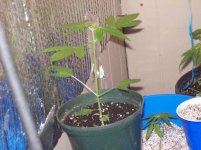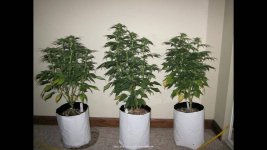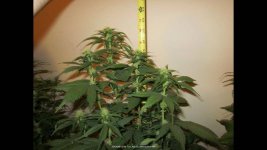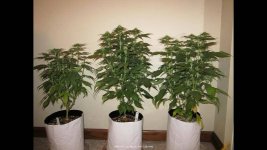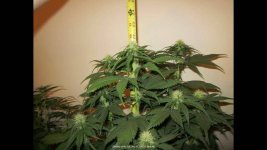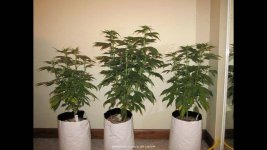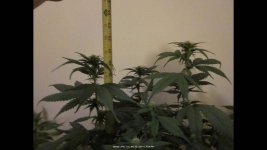BasementBreeder
Member
Light: 600w HPS with Adjust-a-Wing reflector
Medium: 2gal grow bags filled with 2:1 mix of peat/perlite. No lime added
Space: 4ft x 4ft x 6.5ft generic grow tent
Temps: Day- 75 to 85*F. Night- 65 to 75*F
Humidity: varies between 50-70%
Genetics: clones from a Sensi Northern Light mother
Nutes: custom nutes,fed dtw, with elemental N-P-K-Ca-Mg of 160-50-300-180-50(typically fed at 80-90% strength)
Five of the plants will also receive 20ml/gal of BioAg Ful-Power every time they receive nutes.
Initial Size: All plants were 12 -13.5in tall when flowering was initiated. Six of the ladies were flowered on May 2. Two other on May 5 and one on May 8. Shorter plants are positioned in the middle, as well as on books, to create an even canopy.
The plants in these pictures were introduced to flowering on May 2. The close up is of the largest(middle) to show perspective. These are receiving the fulvic acid.


